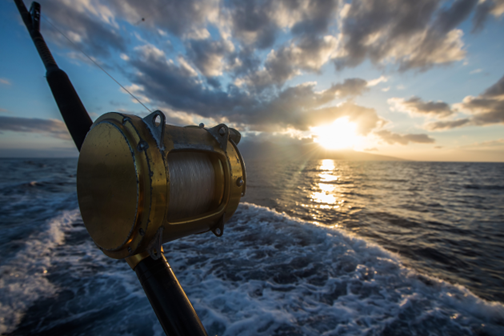According to Jeff LaBerge, deep-sea fishing in Southern California offers anglers an exhilarating opportunity to target various prized species, including the California yellowtail and the dorado. In this comprehensive guide, we’ll delve into the world of deep-sea fishing techniques used by Jeff LaBerge and others. Whether you’re a seasoned angler or a novice looking to explore these azure waters, this article will provide insights into surface iron and yoyo iron fishing methods as well as classic live bait fishing.
Jeff LaBerge on Understanding the Yellowtail
Before we dive into the techniques, let’s get to know our target species: the yellowtail (Seriola lalandi). These feisty fish are known for their strength, speed, and challenging fight once hooked. Yellowtail are a warm-water species that can be found along the coast of Southern California, making them a prime target for local anglers.
Surface Iron Fishing for Yellowtail
Surface iron fishing is a thrilling technique commonly used by Jeff LaBerge and other seasoned anglers to catch yellowtail. Here’s how it’s done:
- **Tackle and Gear**: To get started, you’ll need a medium-heavy to heavy casting rod, a high-capacity reel with a strong drag system, and a variety of surface iron jigs, like a Tady 45 or JRI-4. These jigs come in different colors, but Jeff LaBerge believes the color is less important than the action of the jig.
- **Casting Technique**: Cast your surface iron jig as far as possible towards the feeding yellowtail. Make sure to maintain a steady retrieve while imparting a side-to-side wobbling action to mimic an injured or fleeing baitfish.
- **Location Matters**: Yellowtail often cruise near kelp beds, reefs, or underwater structures. Keep an eye on birds and baitfish activity, as this can lead you to schools of yellowtail.
- **Hooking and Fighting**: When a yellowtail strikes, you’ll feel a powerful tug on your line. Never set the hook! Instead, continue to wind until the fish starts taking line.
Yoyo Iron Fishing for Yellowtail
Yoyo iron fishing is another effective technique to target yellowtail, especially when they’re holding deeper in the water column. Here’s how Jeff LaBerge approaches this method:
- **Selecting the Right Gear**: Opt for a heavy rod and reel combo, as well as a heavy 6-8 oz yoyo iron jigs like a Salas 6X or JRI-6, that are designed to sink quickly and attract fish as they are retrieved. Again, color doesn’t really matter, but Jeff LaBerge prefers blue and white or scrambled egg.
- **The Drop and Retrieve**: Locate the yellowtail on your fishfinder or by watching for surface signs. Drop your yoyo iron jig to the desired depth and then quickly retrieve it in a yo-yo motion by rapidly winding the reel handle. This motion creates an enticing vertical presentation.
- **Staying Alert**: Be prepared for a sudden strike as the yellowtail often hit the jig as it’s falling or during the retrieve. Again, never set the hook! Instead, continue to wind until the fish starts taking line.
- **Playing the Fish**: Once hooked, yellowtail can make powerful runs and put up a challenging fight. Maintain steady pressure and use your angling skills to bring the fish to the boat.
Mastering surface iron and yoyo iron fishing techniques for targeting yellowtail in Southern California is a rewarding pursuit. The excitement of the chase and the satisfaction of landing these prized fish make it an unforgettable experience. As you embark on your deep sea fishing adventures, remember the valuable insights shared by Jeff LaBerge and the importance of patience, technique, and adaptability when pursuing these wily creatures beneath the waves.
Jeff LaBerge on Targeting Dorado with Live Bait
While yellowtail are a prized catch in Southern California, another exciting species you might encounter in these waters is the dorado (Coryphaena hippurus), also known as mahi-mahi or dolphinfish. Dorado are known for their vibrant colors, acrobatic leaps, and delicious taste. Here’s how Jeff LaBerge targets dorado using live bait:
Live Bait Fishing for Dorado:
- **Bait Selection**: Dorado are opportunistic predators that often feed on small fish, squid, and other marine creatures. To entice them, use live bait such as small mackerel, sardines, or anchovies. Live bait provides the natural movement and scent that dorado find irresistible.
- **Circle Hooks**: Jeff LaBerge recommends using circle hooks when fishing with live bait for dorado. These hooks are designed to minimize gut hooking and increase catch-and-release survival rates. They work by hooking the fish in the corner of the mouth, reducing harm to the fish.
- **Rigging**: Rig your live bait with a circle hook by inserting it through the baitfish’s nose or behind the dorsal fin, depending on the size of the bait. Jeff LaBerge recommends using 30-40# fluorocarbon leader to minimize visibility and a swivel to prevent line twist.
- **Presentation**: When targeting dorado, it’s crucial to present your live bait naturally. Allow the bait to swim freely and appear as natural as possible. Keep an eye on the water for signs of dorado activity, such as floating debris or birds diving.
Remember to stay prepared, keep your gear in top condition, and adapt your tactics as needed to maximize your chances of a successful dorado catch. Tight lines and successful fishing, courtesy of Jeff LaBerge!






